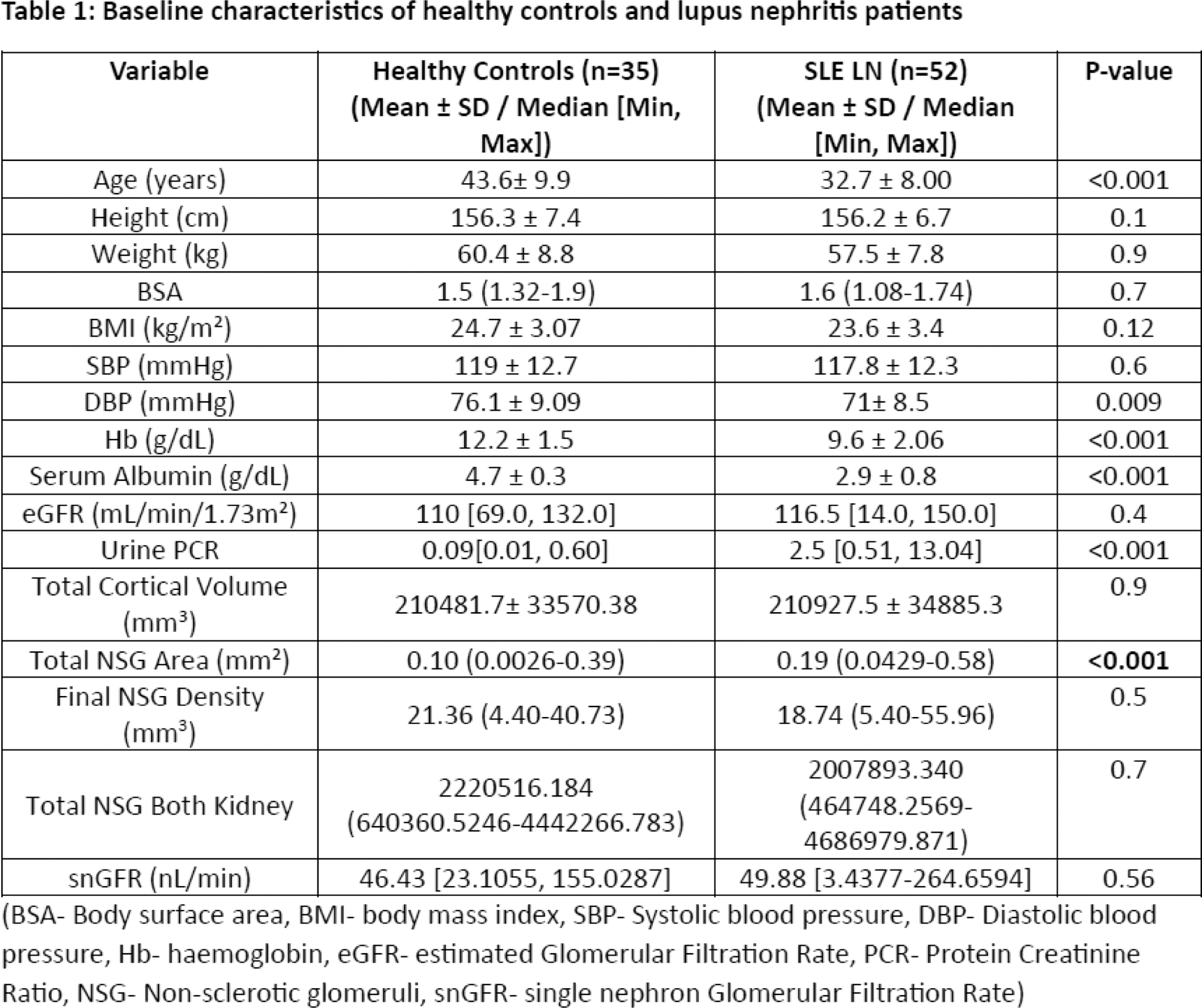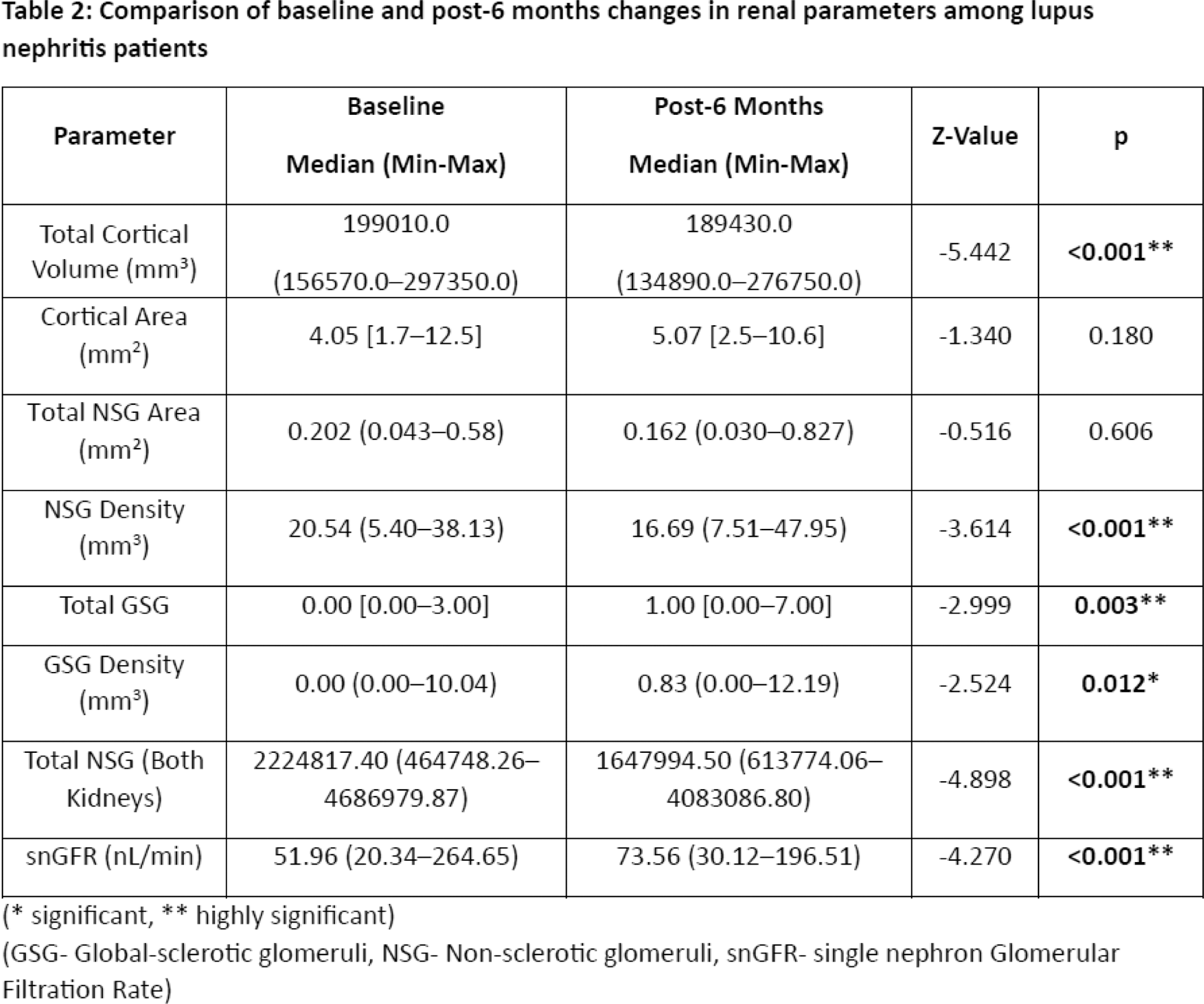

Background: Lupus nephritis (LN) affects up to 60% of systemic lupus erythematosus (SLE) patients and is a major predictor of end-stage renal disease (ESRD). Despite clinical remission, nephron function and reserve may remain compromised. Total nephron number, globally sclerotic glomeruli (GSG) density, and single-nephron glomerular filtration rate (snGFR) have emerged as critical markers for assessing renal health, but their changes post-induction therapy in LN remain underexplored.
Objectives: To evaluate nephron numbers and snGFR in LN patients compared to healthy controls and to investigate changes in these metrics with 6 months of induction therapy.
Methods: This prospective observational study included 52 SLE patients and 35 healthy controls meeting KDIGO living donor evaluation criteria. CT urography and renal biopsies were performed to estimate cortical volume, non-sclerotic glomeruli (NSG), and GSG densities using stereological models. From these data, nephron numbers, otherwise known as Non-sclerotic glomeruli (NSG), globally sclerotic glomeruli (GSG) density, and single-nephron glomerular filtration rate (snGFR) were assessed at baseline for LN patients and healthy controls, and after six months of induction therapy for LN patients. The snGFR was calculated by dividing total GFR by nephron number. Wilcoxon signed-rank tests were used to evaluate changes between baseline and post-therapy metrics.
Results: At baseline, LN patients exhibited lower serum albumin, hemoglobin and higher NSG area (p < 0.001) compared to controls (Table 1). Post-induction therapy, significant reductions in total cortical volume (p < 0.001) and total nephron number (p < 0.001) were observed, while globally sclerotic glomeruli (GSG) density (p = 0.012) and snGFR (p < 0.001) increased (Table 2). Despite the recovery of proteinuria post-induction therapy, LN patients experienced significant nephron loss, increased GSG, and heightened snGFR indicative of compensatory hyperfiltration.
Conclusion: These findings underscore the need for individualized, potentially more aggressive immunosuppressive therapy to preserve nephron function and minimize glomerular damage in LN. Heightened snGFR indicate dynamic compensatory responses of nephron function in LN, thus there is a potential role of snGFR and GSG metrics as markers for therapeutic response and long-term renal outcomes.
REFERENCES: [1] Denic A, Mullan AF, Alexander MP, Wilson LD, Augustine J, Luehrs AC, Stegall MD, Kline TL, Sharma V, Thompson RH, Rule AD. An Improved Method for Estimating Nephron Number and the Association of Resulting Nephron Number Estimates with Chronic Kidney Disease Outcomes. J Am Soc Nephrol. 2023 Jul 1;34(7):1264-1278.
[2] Denic A, Mathew J, Lerman LO, Lieske JC, Larson JJ, Alexander MP, et al. Single-nephron glomerular filtration rate in healthy adults. N Engl J Med. 2017;376(24):2349-57. doi: 10.1056/NEJMoa1614329.


Acknowledgements: NIL.
Disclosure of Interests: None declared.
© The Authors 2025. This abstract is an open access article published in Annals of Rheumatic Diseases under the CC BY-NC-ND license (